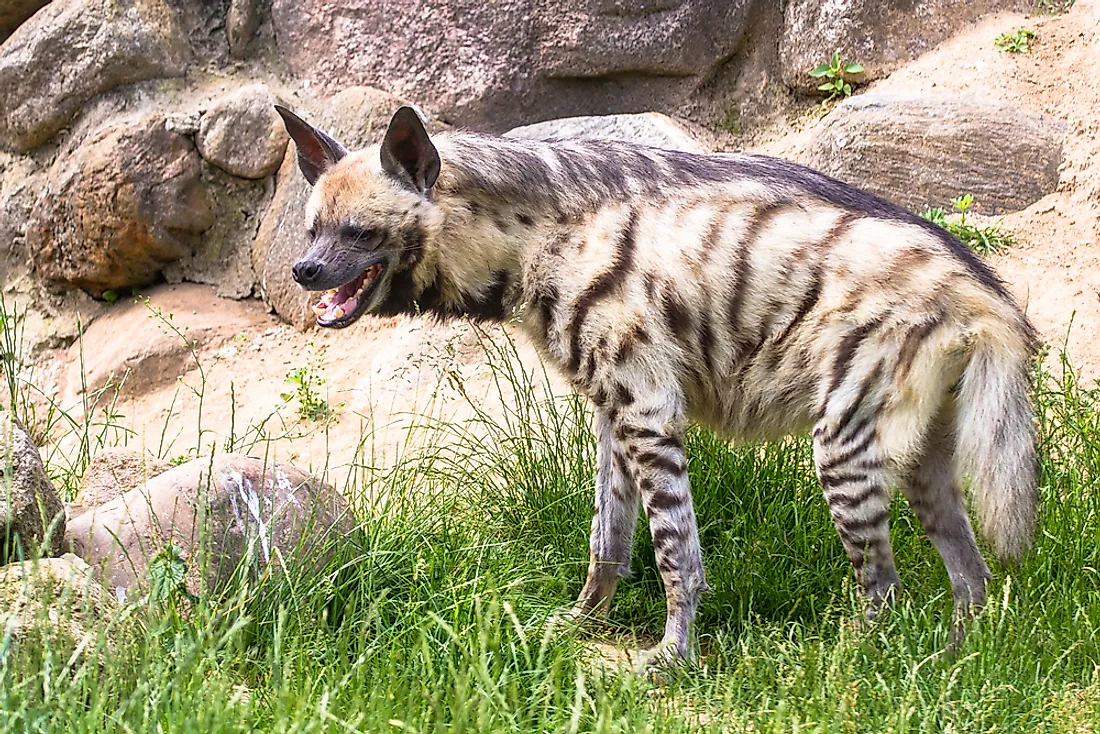What is the National Animal of Lebanon?

The stripped Hyena is the national animal of Lebanon. Striped hyenas are commonly found in arid and mountainous scrub woodland. The species usually establish dens by burrowing and occupying burrows previously occupied by warthogs and porcupines. Striped hyena dens are also found in caves, erosion channels, rock fissures, and dense thickets.
Unfortunately, it has been listed as near-threatened animal by the IUCN. There are an estimated 10,000 mature striped hyenas distributed across the world mainly in North Africa, East Africa, central Asia, the Middle East, the Caucasus, and the Indian Subcontinent. Habitat loss and hunting have been named as the leading causes of the dwindling population.
What Does a Spotted Hyena Look Like?
The striped hyena is significantly smaller compared to the spotted hyena. The average weight is about 49-120 pounds while the average length is about 33-51 inches. The species is characterized by a thin frame and long hairs with blackish stripes on their torso, head, and legs. When threatened, the striped hyena erects its hair which increases its size by about 38%. Males do not differ significantly in size from the females but are known to be heavier. The striped hyena's back is seen to slope downwards due to significantly shorter hind legs.
Conservation
The striped hyena has been a target of continuous persecution over the decades which has led to an alarmingly low population. Human activity has been blamed as the major contributor of the near extinction of the species. Humans loathe striped hyenas due to their tendency to dig-up human corpses from the grave and prey on livestock. Poisoning is one of the most commons ways used to kill hyenas and large-scale poisoning of hyenas has also been recorded in Lebanon, Jordan, Syria, and Israel (1918-1948). Hunting is also common as the skin and body parts of the striped hyena are known to have mythical medicinal and supernatural powers in countries such as Morocco. Most countries, however, do not have a dedicated conservation program with only a few of them advocating for human-wildlife conflict management and proper waste management to reduce poisoning.











